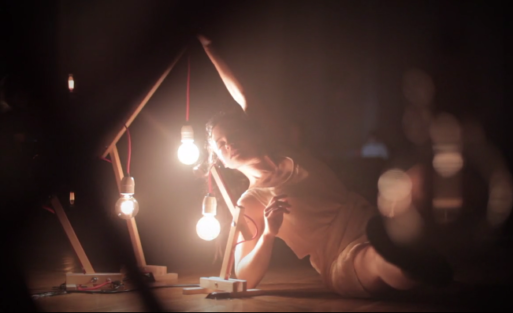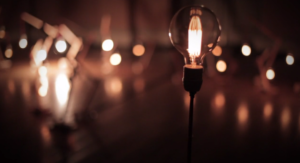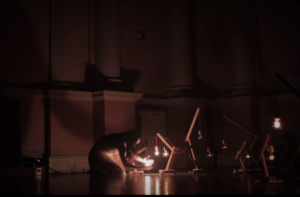
Credit: Vimeo.com
Loss results in a messy, complex set of emotions that affect all five senses. Sometimes, you see the face of the person you lost in a stranger. You smell a hint of their perfume in an elevator. Perhaps you hear their favorite song on the radio or feel the fuzzy lint on their old sweater. You taste the sweet chocolate in the cookie recipe they left behind.
For artists, capturing loss and grief is difficult because of the complexity of the intense emotions that fill all of the senses.
The performance art piece “A Study of Who” is unusual in that it captures nearly every sense at once. And as a result, it’s one of the most accurate portrayals of the five stages of grief that I’ve ever seen. While paintings rely on what the audience can see, and music relies on what the audience hears, a performance art piece like “A Study of Who” never relies on a single sense. Instead, the artists combine multiple mediums to make their point.

Credit: Vimeo.com
“A Study of Who” is, at its core, a dance piece with gorgeous choreography that expresses emotion through motion. However, the performance art also includes an elaborate lighting setup made from hand-carved lamps and tungsten bulbs. As the dancer moves on stage, the lamps flicker in their own carefully-timed choreography, creating an atmosphere of light that works in harmony with the dancers. The music in the background also captures this flickering, surrealist ambiance. The artists even tried their hand at film-making, capturing brief scenes of the performance on camera.
A performance art piece this complicated can easily become unwieldy in the wrong hands. But each artist who worked on “A Study of Who” is adept at what they do. Artistic director and choreographer Heather Eddington commissioned the dance work and collaborated with poet and playwright Anna Mae Selby to translate the five stages of grief into dance. Nocte, a group of lighting designers, handled the 30 individual lamps scattered around the stage. Producer Nosaj Thing provided the accompanying music. Finally, filmmakers Simone Pellegrini, Laura Marcato and Giuseppe Conti artfully captured portions of the performance, which you can see below.
Watching “A Study of Who” floods the senses. You see the lights flicker and mold around the dancer’s body, even as the music overwhelms your headspace. You can practically feel the grainy texture of the carved lamps piled on the floor and sense the heat coming off of every bulb.

Credit: Vimeo.com
Shadows also play an important role in “A Study of Who.” Going through the emotions of grief can feel like a hazy dream. As the dancers move through the scene, their shadows engulf the walls behind them, creating a surrealist, obscured view of the world. As fascinating as it is to watch the pained emotions on the faces of the dancers as they move through each of the five stages of grief, it’s sometimes even more interesting to watch the shadows playing against the wall. Even though their shadows don’t carry facial expressions, they sometimes capture the emotion of each stage of grief more effectively than the dancers themselves.
Grief happens in the real world, and it’s usually a chaotic moment for the people experiencing it. This is why stage performance is perhaps the best way to translate grief into artistic expression. Performance art lives in the moment. Even if it has surreal properties, part of it always remains grounded in the real world. Nothing quite captures the visceral, sense-stimulating gamut of grief like “A Study of Who.”

 Performance Art Illuminates the Five Stages of Grief
Performance Art Illuminates the Five Stages of Grief


 Greenland Sharks May Offer Clues to Extending Human Lifespans
Greenland Sharks May Offer Clues to Extending Human Lifespans
 Losing Her Constant
Losing Her Constant
 Sky Lanterns Bear Wishes and Remembrance into Night Sky
Sky Lanterns Bear Wishes and Remembrance into Night Sky














